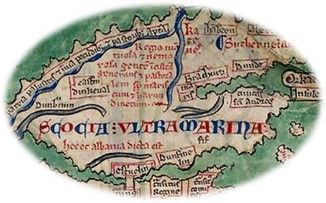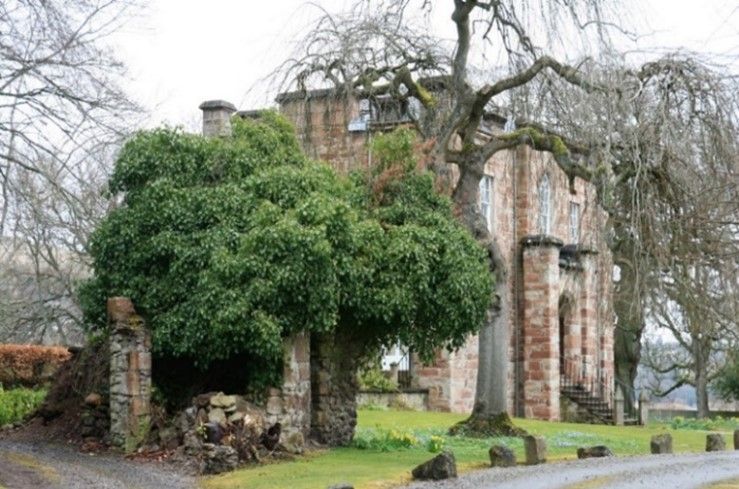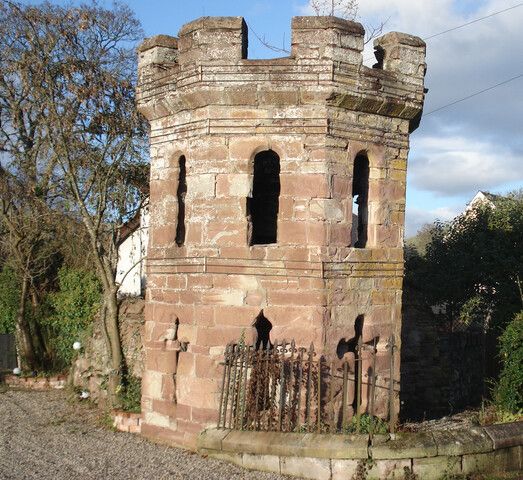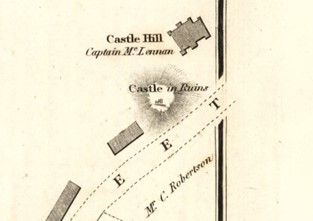Dingwall Castle
Little remains of this once important castle despite royal links throughout its history. In 1226 King Alexander II created a royal burgh alongside the castle. This is generally thought to be recorded on Matthew Paris’s map of Scotland c. 1250.
The castle was briefly held by the English during the Scottish Wars of Independence, but in 1308 Robert the Bruce granted the burgh to Uilleam II, Mormaer (Earl) of Ross. Ironically, Uilleam had previously supported Edward I, but fought with Bruce at Bannockburn. From then on, the Earls of Ross held Dingwall Castle for the Crown. Its strategic position was key to controlling the northern clans and defending to the Western Isles.
When Uilleam III died without a male heir, his daughter became Euphemia Countess of Ross. She had two children, Alexander and Mariota - who married Domhnall of Islay, Lord of the Isles. Alexander’s daughter, Euphemia II, succeeded him as Earl, but had little influence as she was a ward of her grandfather, Robert Stewart. He was the highly ambitious Duke of Albany who captured the infant James I to become Scotland’s Regent in 1406.
Thereafter Dingwall castle became the focus of rivalry between Lords of the Isles and the Scottish Crown. This ended briefly in a truce around 1437, when Alexander of Islay became Earl of Ross with Dingwall Castle as his main seat. However, his son John took up arms against James III, and was stripped of the Earldom. He was also the last Lord of the Isles. The castle was placed in the hands of John Munro of Foulis - the first in a succession of Crown-appointed governors.
After James IV visited the castle in 1503, while on pilgrimage to Tain, its defences were strengthened and a Great Hall built. Mary, Queen of Scots, and James VI, by contrast, took little interest in the northern parts of their kingdom and passed responsibility for the castle to various favourites. By the end of the 16th Century the Crown had let go of the Castle.
The last Keeper of the castle was James Butler, 3rd Lord Dingwall. He supported the Jacobites in the 1715 rising and, on their defeat, the whole estate was forfeited. The castle was bought by William Munro of Ardullie, but by the mid-1700s it was in ruins. Munro’s grandson, the Reverend Colin Mackenzie of Fodderty, used the castle’s stone to build farmhouses at Fodderty and Millnain.
Dingwall Castle Remains
In time, more stone was taken from the castle ruins to build houses in Dingwall. By 1817 the site was virtually levelled, leaving the few remnants that can be seen today. In 1820 Captain Donald MacLennan built Castle House, using some remaining sandstone from the site. Masonry from the original castle still stands in-situ in the house’s driveway - a small circular tower c. 2.6m high. Also, 10m south-west of the tower is an entrance to an underground chamber with a barrel-vaulted ceiling (5.0m x 1.8m and 1.7m high). Both are now covered in ivy.
At the entrance to 27 Castle Street, is a small, octagonal, castellated tower with gun loops. This is a doocot, probably built around the same time as Castle House. It is weathered, cracked and leaning. On the east side are a fireplace and doorway. It has been suggested that the doocot could have been one of the original corner towers of Dingwall Castle. However, if it is in its original position, it is more likely to be part of a surrounding wall. John Wood’s map of 1821 shows the site of Captain MacLennan’s house in relation to the ruined castle site at the end of Castle Street.
Finally, local legend has it that there was a secret tunnel connecting Dingwall and Tulloch Castles. While this is an exciting notion, it does seem unlikely, as it would have had to be about a mile long, and to have crossed the River Peffrey. In all the years of extensive building work in the area, no evidence has ever been found.
Further reading and credits: https://canmore.org.uk/site/12774/dingwall-castle-street-dingwall-castle.
Photos and some text courtesy of ‘Stravaiging around Scotland’ / Andy Sweet.
Text: BA




